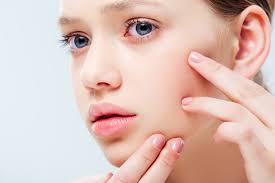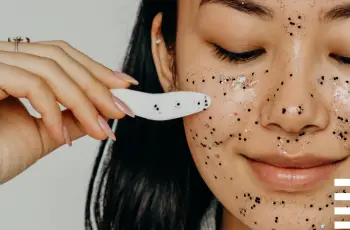
How Long Does It Take to Get Rid of Acne? A Dermatologist’s Guide to Clearer Skin
Acne is one of the most common skin concerns around the world, and while it may seem simple to treat, the process is more complicated and time-consuming than most people think.
Whether you’re dealing with occasional breakouts or chronic cystic acne, knowing how long it takes to get rid of acne—and what steps to follow—can help you stay patient and persistent.
The short answer?
If you’re following a customized skincare routine tailored to your Baumann Skin Type®, using the right acne products, and applying them consistently, acne can begin to clear in as little as 8 weeks.
But here’s the catch—acne is stubborn.
It often takes much longer than people expect to completely clear up, and that’s why many stop their treatment early or switch products too quickly.
This article will walk you through everything that affects how long it takes to get rid of acne, including how to treat red marks, dark spots, and acne scars that linger after breakouts are gone.
How Long Does It Take to Clear Acne?
If you’re doing everything right—using the correct routine, avoiding acne triggers, and staying consistent—most people see noticeable improvement within 8 weeks.
That means breakouts slow down, inflammation reduces, and skin texture becomes smoother.
However, early signs of improvement can appear around 4 weeks, especially if your routine includes a retinoid, benzoyl peroxide, or salicylic acid.
You may not be fully clear yet, but the number and severity of breakouts should start to decline.
Some people experience “purging,” a temporary breakout phase that can happen when starting powerful actives like retinoids.
This phase usually lasts 2–4 weeks and is a sign that the products are beginning to work deep in the pores.
Once your acne clears, the journey isn’t over.
You still have to address the post-acne marks—redness, dark spots, and scars—which can take months to fade and require different treatments.
Factors That Affect How Long Acne Takes to Clear
Acne is complex, and the time it takes to get rid of it depends on several internal and external factors.
Here’s what influences the timeline:
Whether you’re using products suited to your Baumann Skin Type®
How consistently you follow your skincare routine
The type and severity of acne (hormonal, cystic, fungal, comedonal)
Your lifestyle habits, like diet, sleep, and stress management
Exposure to acne triggers like makeup, hair products, or comedogenic ingredients
Hormonal imbalances, including those caused by testosterone or birth control
Medications or supplements like B6 and B12 that may worsen acne
Whether you’re using expired or improperly stored skincare products
The truth is: even if you use the right ingredients, the results won’t come overnight.
You need to give your routine at least 8 weeks before evaluating how well it’s working.
Why Consistency Is Everything in Acne Treatment
Many people get impatient and stop using acne products before they’ve had a chance to work.
This is one of the biggest reasons acne treatments fail, even when the products are excellent.
Your skin operates on a natural renewal cycle called desquamation.
This process takes about 28–45 days and must complete several times to fully eliminate clogged pores, inflammation, and breakouts.
When you stop your routine early, you interrupt that cycle, forcing your skin to reset—and prolonging the time it takes to heal.
Think of your acne routine like a marathon, not a sprint.
Stick with it every morning and night, and don’t introduce new products without giving the current ones time to work.
It’s better to do less with precision than to constantly switch routines without direction.
How Long Does It Take to Get Rid of Acne Marks?
Once acne clears, it often leaves behind red marks or dark spots.
These are not true scars but are still frustrating and take time to fade.
There are three types of post-acne marks:
Red marks – caused by inflammation and enlarged blood vessels
Dark spots – caused by melanin overproduction due to inflammation
Acne scars – permanent changes in skin texture that require advanced treatments
Let’s take a closer look at how long each type of mark takes to fade—and what helps them go away faster.
How Long Do Red Acne Marks Take to Fade?
Red marks from acne, also known as post-inflammatory erythema (PIE), can take several weeks to several months to fade naturally.
They appear flat and red or pink but don’t have the shiny or indented look of a scar.
Because these marks are tied to blood vessel activity, using vasoconstrictive ingredients like hydrocortisone can delay healing.
Instead, let the skin repair itself naturally or use calming ingredients like niacinamide or azelaic acid.
In some cases, a vascular laser can speed up the healing of red marks, but it’s typically not necessary unless you have an urgent event.
Patience and consistent care are the best long-term solutions.
How Long Do Dark Spots From Acne Take to Fade?
Dark spots, also called post-inflammatory hyperpigmentation (PIH or PIPA), are much slower to heal—especially on darker skin tones.
They are flat, brown or grayish in color, and can take 12–16 weeks to fade with proper treatment.
These marks form due to excess melanin created in response to inflammation in the acne lesion.
The more inflamed the breakout, the higher the chance of dark spot formation afterward.
Ingredients like niacinamide, tranexamic acid, licorice extract, and tyrosinase inhibitors can help fade dark spots faster.
Avoid picking, popping, or irritating your acne, as that only increases your risk of PIH.
Sun exposure can worsen these marks, so daily sunscreen is non-negotiable if you want to see fading within a reasonable timeframe.
How Long Do Acne Scars Take to Heal?
Unlike red and dark marks, acne scars involve actual damage to the skin’s collagen structure.
These are long-lasting and often require treatments like microneedling, lasers, or chemical peels to see improvement.
There are several types of acne scars:
Ice pick scars – narrow, deep indentations
Boxcar scars – wide, shallow scars with defined edges
Rolling scars – wavy, uneven skin texture
Hypertrophic or keloid scars – raised, thickened scar tissue
Acne scars will not fade on their own and cannot be treated with topical products alone.
If you suspect scarring, speak with a dermatologist about treatment options early.
Why Does Acne Take So Long to Clear?
Acne begins in the hair follicle, and when this area gets clogged with oil, bacteria, and dead skin cells, a pimple forms.
Fixing this process requires the skin’s natural exfoliation system to work correctly again.
This process, called desquamation, gets disrupted in acne-prone skin.
The dead skin cells don’t shed properly, creating blockages deep in the follicle.
It takes time—often 6–8 weeks—for these clogged follicles to return to normal.
Once they do, breakouts begin to slow and skin starts healing.
But remember: acne recurs until the underlying process is under control.
Consistency is the only way to stop it from coming back.
How to Prevent Acne Marks and Recurrence
You can’t prevent acne marks if you’re still breaking out.
So the first priority should always be to stop new pimples from forming.
Here’s how to do that:
Use the right products for your Baumann Skin Type®
Stick to your routine every morning and night—no exceptions
Avoid pore-clogging or comedogenic ingredients in skincare and makeup
Don’t pick or pop your pimples
Wear sunscreen every day to prevent dark spots
Continue your routine even after acne clears to prevent relapse
Final Thoughts: Be Patient, Be Consistent, and Be Smart
Acne doesn’t clear overnight—but if you follow a scientifically backed routine suited to your skin type, you will see results.
You’ll start noticing improvement in about 4 weeks, with major progress by week 8 if you stay the course.
Red and dark marks can take months to fade, while true acne scars may require in-office procedures.
But you can absolutely prevent further damage with smart, daily skincare habits.
So don’t give up halfway through the process.
Clear skin takes commitment—but once you know your skin type and follow the right plan, you’re on your way to long-term success.
Take the quiz to find your Baumann Skin Type® and get the customized acne routine your skin needs.
Your skin’s future depends on the choices you make today—so make them wisely and stick with it!


